
SPRING 2024


SPRING 2024
VOICE OF THE COLLEGE OF ENGINEERING, MATHEMATICS AND SCIENCE SINCE 1926

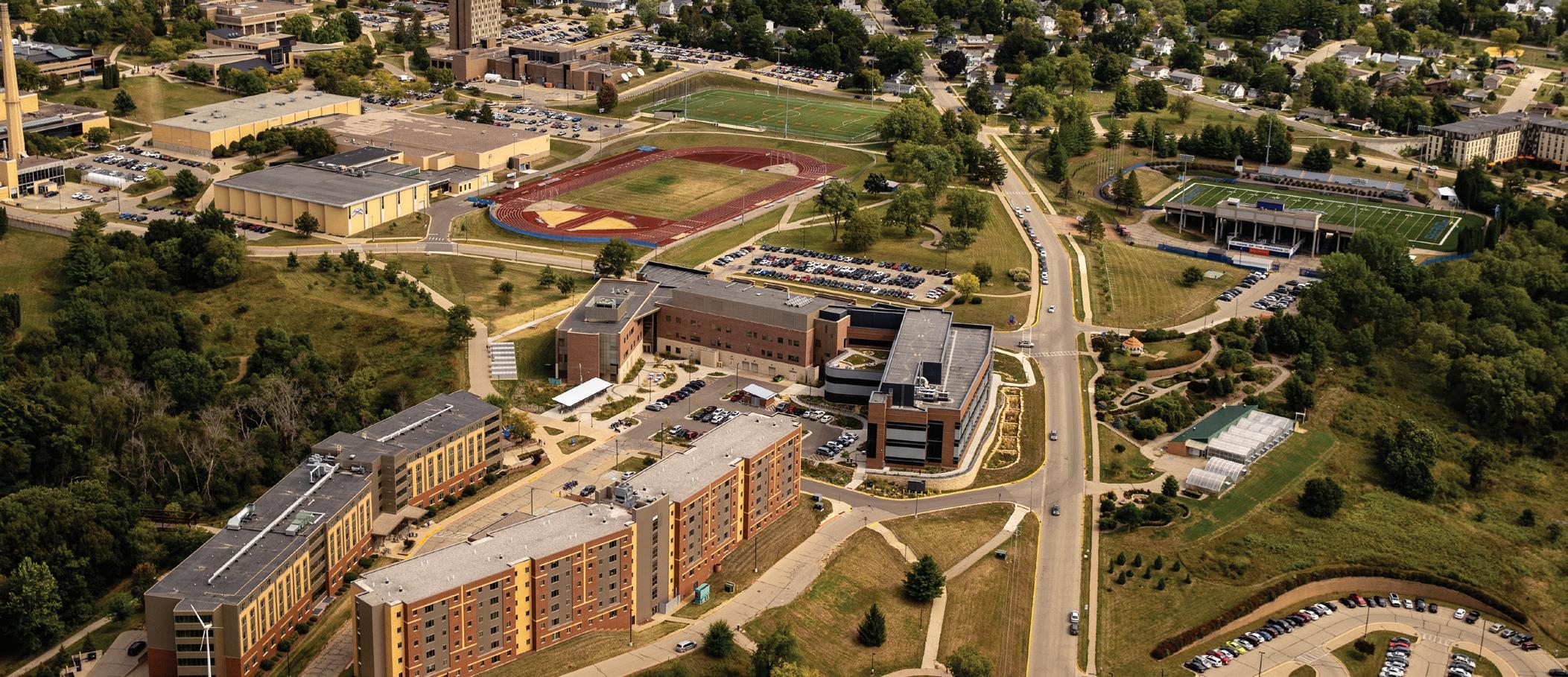
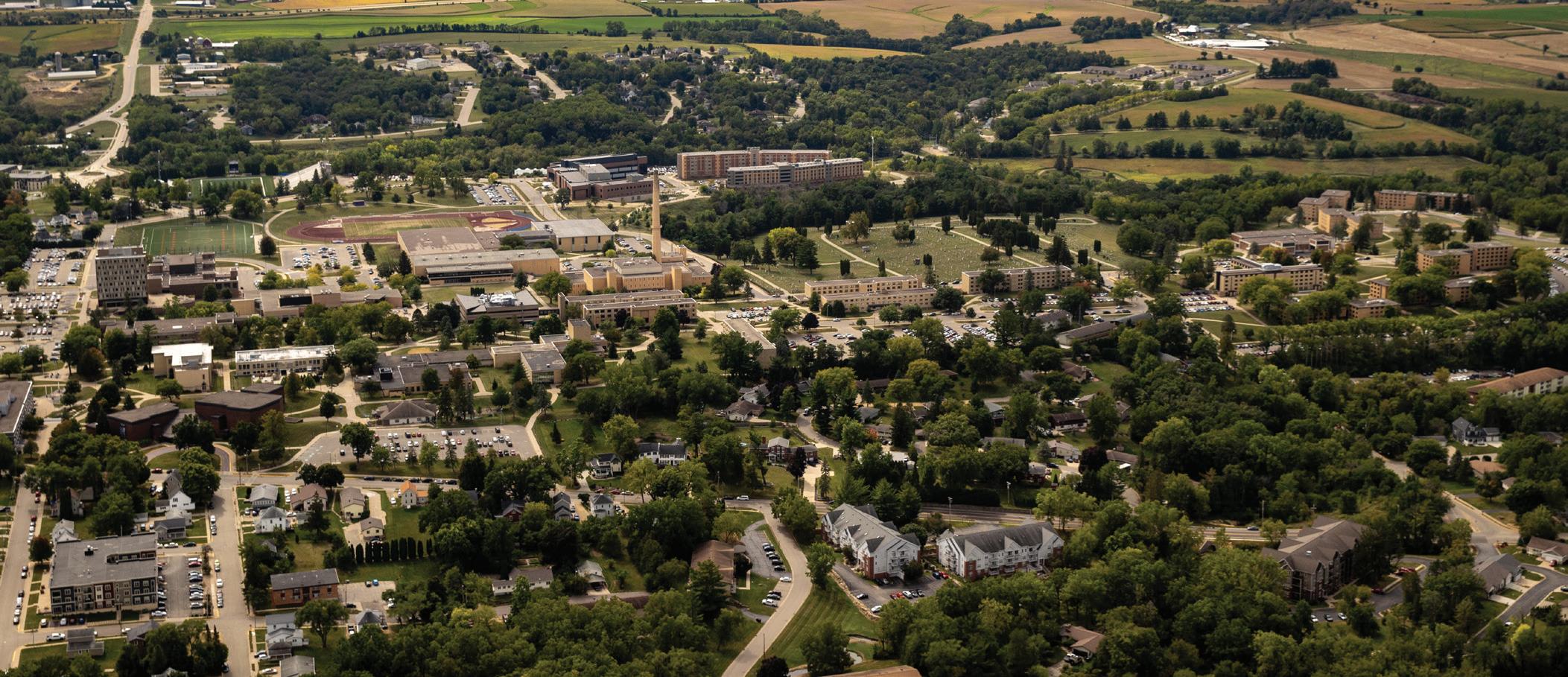
4–5 How did we get here?
6–8 The Geode
9–13 School history
14–15 Photo gallery
16–19 Extracurricular
20–21 The M
22–27 Donor list
About this edition:
This issue of the Geode is meant to honor the rich history of the University of Wisconsin-Platteville. In this edition, we are sharing snapshots of campus history through stories published between 1925 and 1958 and images from the early 1900s to 2010. We will see what life was like in the early days of the university for students, staff, and faculty—from the research they conducted to the creation of new institutions, from the Platteville Normal School to today’s University of Wisconsin-Platteville. We will see the addition of new programs, extracurriculars, and even some student writing about what campus life was like and the tools they used to be successful. We hope you enjoy this edition of the Geode as much as we did when crafting it.
We would like to acknowledge the UW-Madison Online Photo Archive for providing the majority of the photos used in this issue. We would also like to thank the Southwest Wisconsin Rooms at UW-Platteville for providing the articles and additional images for this edition.
- The College of Engineering, Mathematics and Science Geode Team
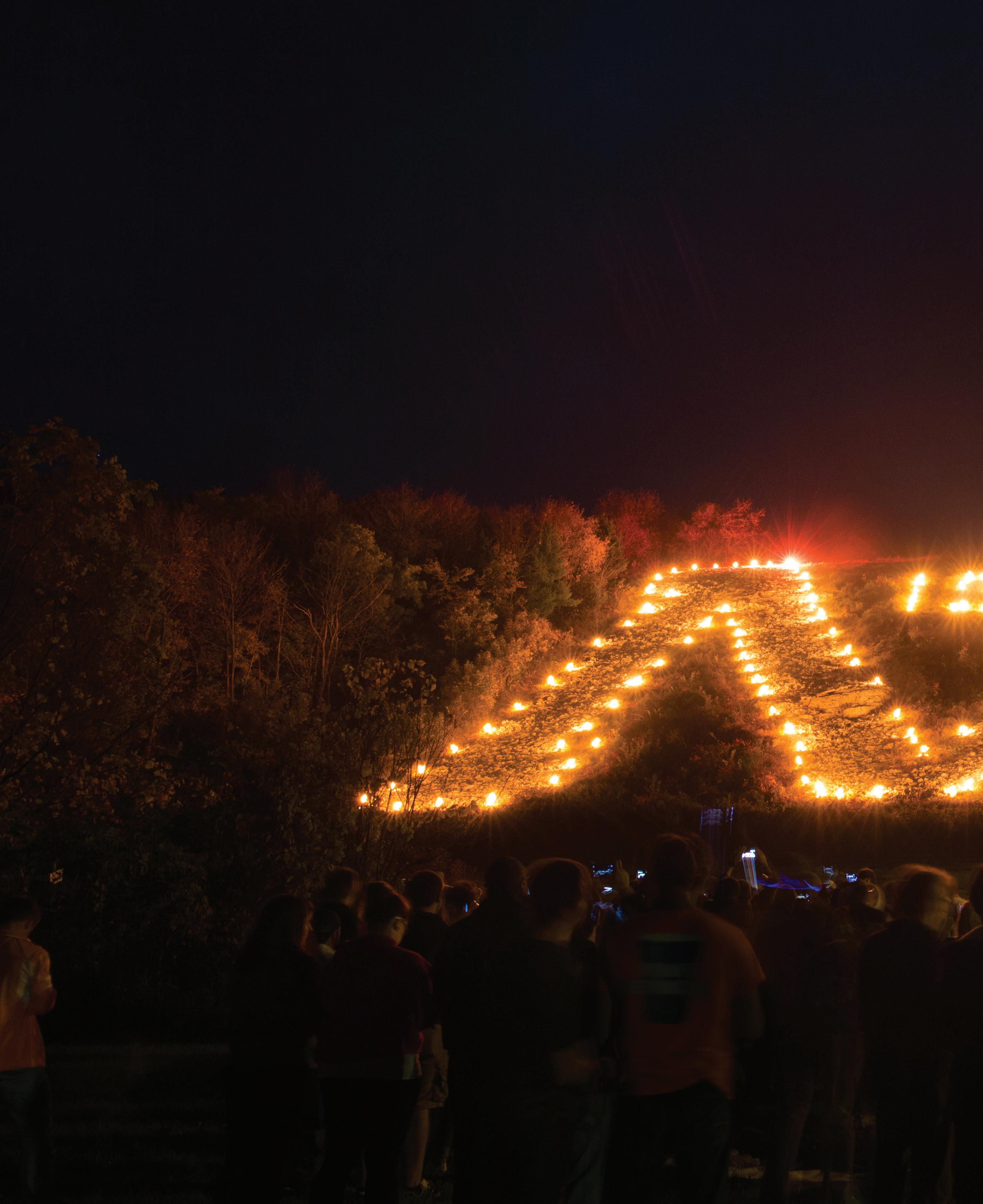
1866
Platteville Normal School was founded and served as the state’s first teacher preparation institute.
1908
The Wisconsin Mining Trade School was established with the goal to train people in local mining operations.
1939
The Wisconsin Mining Trade School changes its name to the Wisconsin Institute of Technology.
1952
The Wisconsin Institute of Technology gets its first four-year degree programs in mining engineering and civil engineering.
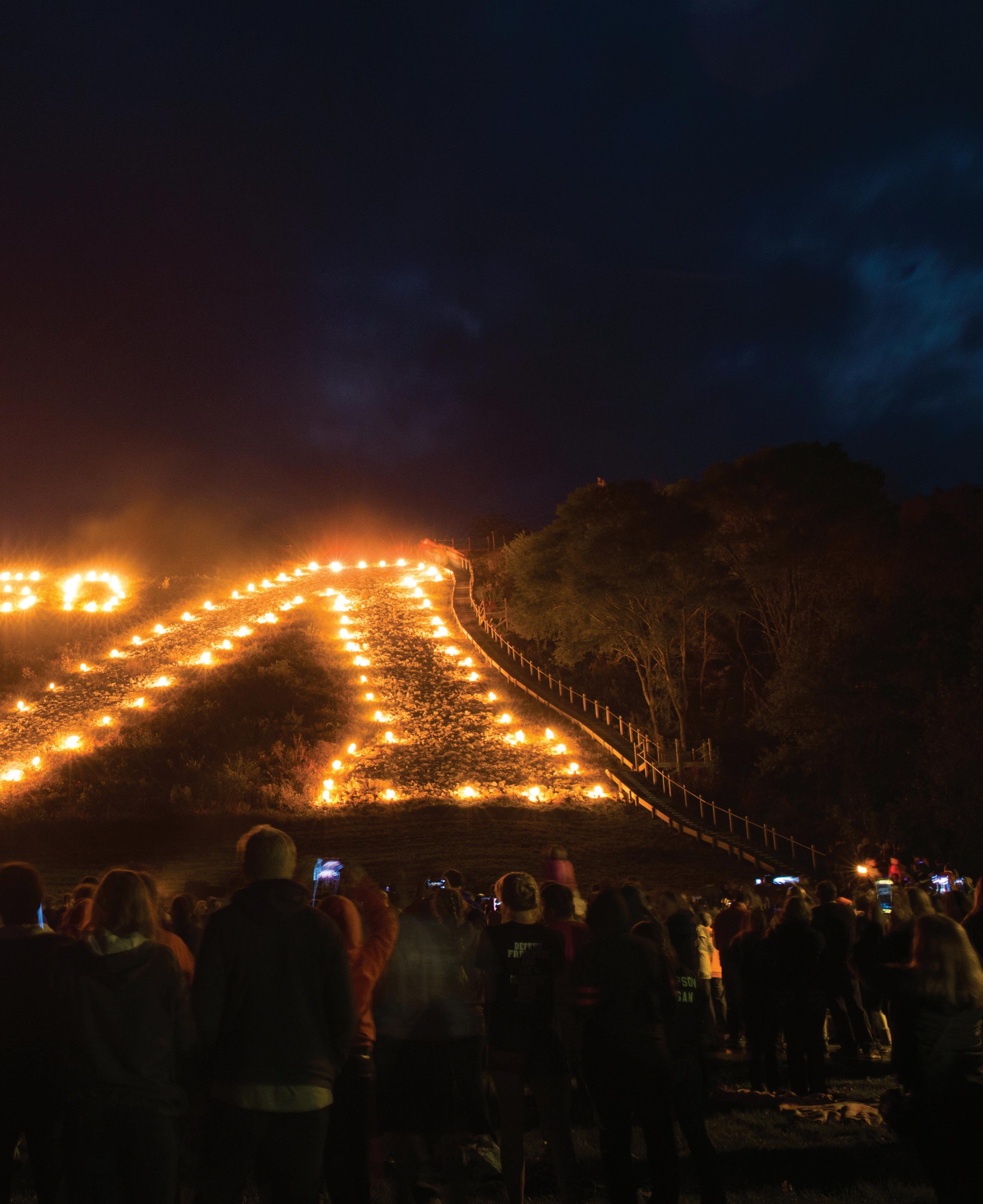
1959
The Normal School and Wisconsin Institute of Technology merge to form the Wisconsin State College and Institute of Technology
1964
Wisconsin State Colleges are given university status and WSCIT becomes the Wisconsin State University at Platteville.
1971
The Wisconsin State University at Platteville become the University of Wisconsin-Platteville.
By H.B. Marrow, Director
We extend a hearty and cordial welcome to this, the initial issue of the Geode. For those of you who may not be fully informed it might be well to explain that the name means “A nodule of stone having a cavity lined with crystals or mineral matter.”
The establishment of any new enterprise is accompanied by much hard work and in some instances, with many hazards, particularly financial ones. This is especially true when attempting to establish a monthly newspaper in a small school city. The initiative that prompts such efforts is to be highly commended. The organization of any worthwhile activity requires great tenacity of purpose on the part of its founders, and we hope that those who have the matter directly in charge may find both inspiration and encouragement in the results.
The writer has always thought of a school as being quite comparable to an industrial concern. The
character upon the coming generation. “As the twig is bent the tree’s inclined” is illustrated nowhere as well as in some of the European countries where for generations they have been taught the spirit of conquest and the glory of war.
The many discoveries of science and the many inventions of recent years have been the results of intensive application on the part of individuals who had the desire for accomplishment and a wish to excel.
When we contemplate the telephone, later the wireless telegraph and now the radio we see how the hope of a former generation have become actualities in this one; but the wonderful things that are visionary or chimerical today can only become realities tomorrow because of the fact that individuals have wanted to produce something which would be of service to their fellowmen.

administrative head of the institution represents the president of a corporation or head of a business; the heads of the various departments of instruction compare with the foremen or superintendents; the raw material is the students entering each year, and those who graduate are the finished product. Nearly every manufacturing concern takes pride in the quality of its product. I know this is equally as true of the members of the faculty in an educational institution.
It may safely be said that every member of the teaching force of any school is imbued with the spirit of service and tries to instill this idea into the minds of the young students under them. Without the thought of service success is impossible. Instructors hope to leave an imprint of their own life and
Newspaper men get and give us the daily news. They are taught to search for the truth at all times. Young people while attending school are taught to ascertain the correctness of certain premises and then reason to a logical conclusion. If boys and girls during their youth form the habit of searching for the truth; they are quite apt to carry it with them through life. Such a thing as establishing a small school newspaper is indeed rather an indirect method of serving. It, however, shows a desire to accomplish which is the most essential thing.
I therefore extend greetings to the first issue of the Geode and express the hope that it may have a long record of service and achievement.
In doing some research for an article recently, one of the staff members found it necessary to look through some of the old issues of the Geode dating as far back as 1925. In glancing through these old issues there were many articles on school functions and related subjects which caught the eye. However, the one phrase that kept cropping up down through the years in both the editorials and copy is this one: “The Geode is the voice of the students and alumni of W.I.T.”
As you read that line over and reflect on its meaning, you soon realize that if this motto had not been adhered to the Geode would never have survived these 30 years.
This is probably true for any school paper. If the responsibilities for editing the publication was always up to the same small group of people, these people would soon tire of their thankless job and the paper would die.
It was also evident in reading over the old Geodes that the entire student body not only read every issue, but they took
an active part in forming the paper’s policies if not actually writing it. When the men didn’t care for what was being printed, they let the staff know about it and gave some concrete suggestions for improvement.
The only way we on the staff can keep this paper truly “The voice of the students” is to hear the students’ voices once in a while; not just off the cuff remarks about printing more jokes or the like but sound criticisms.
The staff is always open for replacement or expansion and a man with good ideas and who is at all handy with words can make the grade easily. Instead of the “let George do it” attitude why not drop by the Geode office some Tuesday afternoon at 4 p.m. and if you don’t feel you are capable of writing, tell us what you like or dislike about the paper. Help keep the Geode “The voice of the students and alumni of W.I.T.” for another 30 years.

The establishment of the Wisconsin Mining School at Platteville was the result of a felt need. In 1906, there were 212 mining companies in the district. The young men of the section desired to obtain better positions and command larger salaries offered by these companies. In order to obtain these, they needed practical engineering knowledge. Many were ineligible to attend the established engineering schools so were cut off from help of further advancement. A group of citizens realized the need for an institution in the field. They besought the State Legislature and their petition was granted. The Wisconsin Mining School was established by an act of the Legislature of 1907. The city chosen for the location of the school was Platteville, the largest in Southwestern Wisconsin, and admirably located. It lies in the heart of the driftless (non-glaciated) area of Southwestern Wisconsin, Northwestern Illinois and Northeastern Iowa. The region as a whole is rather rugged. The underlying rock formations, which were exposed in many places near Platteville, afforded excellent opportunities for field study by classes in Geology.
The local mining district affords unusual opportunities for the practical education of students in mining methods. The milling machinery, the pitch of the ore bodies, the methods of prospect drilling, the transformation of the sulfur content of the ore into sulfuric acid are all open to the observation of the student and materially supplement his theoretical training of the classroom.
Platteville has been not only a mining town, but from the earliest days of our state’s history has been an educational center. Platteville Academy, the first institution in the state to offer courses in Higher Education, was chartered in 1839. This institution became the First Normal School in 1866 and functioned as such until 1906. The central portion of the present building erected in 1853 for the Academy, together with three large additions, form the home of the Wisconsin Mining School.
The city was selected for the Legislature as the best place for the location of the Wisconsin Mining School not only
because it lies in the heart of the lead and zinc district, but because the natural beauty, the associations, and the general atmosphere of culture and refinement, all contribute those things most necessary for the welfare of young men students.
An education is the birthright of every American boy and girl. During the last few years many young men have been forced to leave high school before graduation. Some may have left of their own volition, but in nearly every instance they have realized their handicap after a few years. Many wish to return to school but find there is no place for them. They are usually too proud to return to High School and the College or University will not receive them.
This is the type of student that the Wisconsin Mining School seeks to help. Training along the lines of a young man’s choice, particularly in the more practical affairs of engineering, certainly ought not to have denied him simply because he has not had a high school education. Those are accepted who are considered able to do the work and who desire to better their conditions and increase their power for service in life regardless of their preliminary education or former occupation.
It is now a well-recognized fact that there is a great difference between education and training. Our modern civilization requires specialization in all lines. It is found that after a few years young men naturally work into administrative or executive positions to which their engineering knowledge is only incidental, but for which they are especially fitted by virtue of their education and training.
The Wisconsin Mining School was founded to serve the mining district in which it is located. The idea of services has always been paramount. The service rendered is no longer to this particular district but extends throughout the State. The Mining School aims also to serve industry; but its greatest service is rendered directly to Wisconsin’s young men.
Did you ever see an educational institution anywhere in which the students felt that each and every instructor belonged to the gang? That is the condition at the W.M.S. but we go to the limit. We ring in the director and the regents. Any student after a month spent here knows that he is welcome to talk to the director or any instructor at any time and on any subject that is worthwhile and who has ever seen the local regent Mr. W.N. Smith, dodge a chat with a “Miner”? These men are not bogles but men that have had close associations with men under trying conditions and have learned in the school of experience that to be successful among the requisites is found, “be a MAN among men.”
Student activities are governed by the Engineering Club in which every student and instructor holds membership. The school senate composed of four instructors and four students act as court of appeal.
We have a student loan fund which in the past two years has proven to be of great benefit to several of the students.
We have a fraternity which in its few months of existence has proven a great success socially.
Lastly, the Geode, the baby of the creations, is strictly a thing of and by the students, Of course, any member of the faculty willingly submits articles at any time a request is made.
The W.M.S is a good school for any man who can appreciate the above and many other unique things.


Surveying class 1920s
On September 21, 1939, the State Assembly passed a bill changing the name of and Status of WMS. The name has been changed from the Wisconsin Mining School with a three-year course in mining engineering to the Wisconsin Institute of Technology. Under the new law the school will offer the students a four-year diversified course of technical subjects other than mining engineering, leading up to a Bachelor of Science degree in the latter. The addition of an extra year will not mean revamping the present course but the subject of hydraulics, electrical engineering, mechanics, microscopic laboratory (metallography), English, economics, accounting, drafting, and field geologic maps will be worked in to form the four-year course which will embrace the necessary subjects for a degree.
When the school was organized in 1906 under its former status, lead and zinc mining was booming in this district of Wisconsin. Foresighted men in Platteville and the State Assembly recognized the need of men capable of developing the wealth hidden in the land here, and so organized the school. A well-rounded course in mining engineering was offered but due to necessary condensation or omission of certain subjects no degree could be offered. During the first two decades and a half the student body was composed mostly of men who had experience in the industry and attended school to aid their advancement in their field. However, in the past few years the average student has changed from the man in the field to the youth just from high school. In the first instance the student pursued and followed only mining engineering; in the second case the
student uses his training for one of two things: either as a predatory steppingstone for higher education, or as a means of increasing his earning capacity before beginning to earn. For Example, John Jones has finished high school and has ambitions for higher training, he wishes to become a petroleum engineer. He decides that the financial strain of a large university would be greater than his resources could stand. He comes then to school here and gains three years of college training in mining engineering, which includes geology – so important to him. He graduates from here and enters a larger school which specializes in petroleum engineering, and after a year of further training, obtains a degree from the other school. His subsequent training at the other school will have been for the most part a review of that which he learned at WMS, with perhaps more stress laid to petroleum geology. He thus has saved per year while at WMS with one third to one half the cost of his last year’s training at some other school. And his education is as good as if not better than he would have received at any larger school.
With this fact in mind, the necessity for changing the course and thus the name of the school will immediately be seen, With the class of 1939 the total number of WMS graduates was 350: of this number 153 attended other schools to further their education, the type of schools varying from aviation technology to forestry to metallurgy in schools in the Unites States, Canada, and England. In nine cases out of ten each of the students furthering his learning would have continued at WMS if the courses desired had been
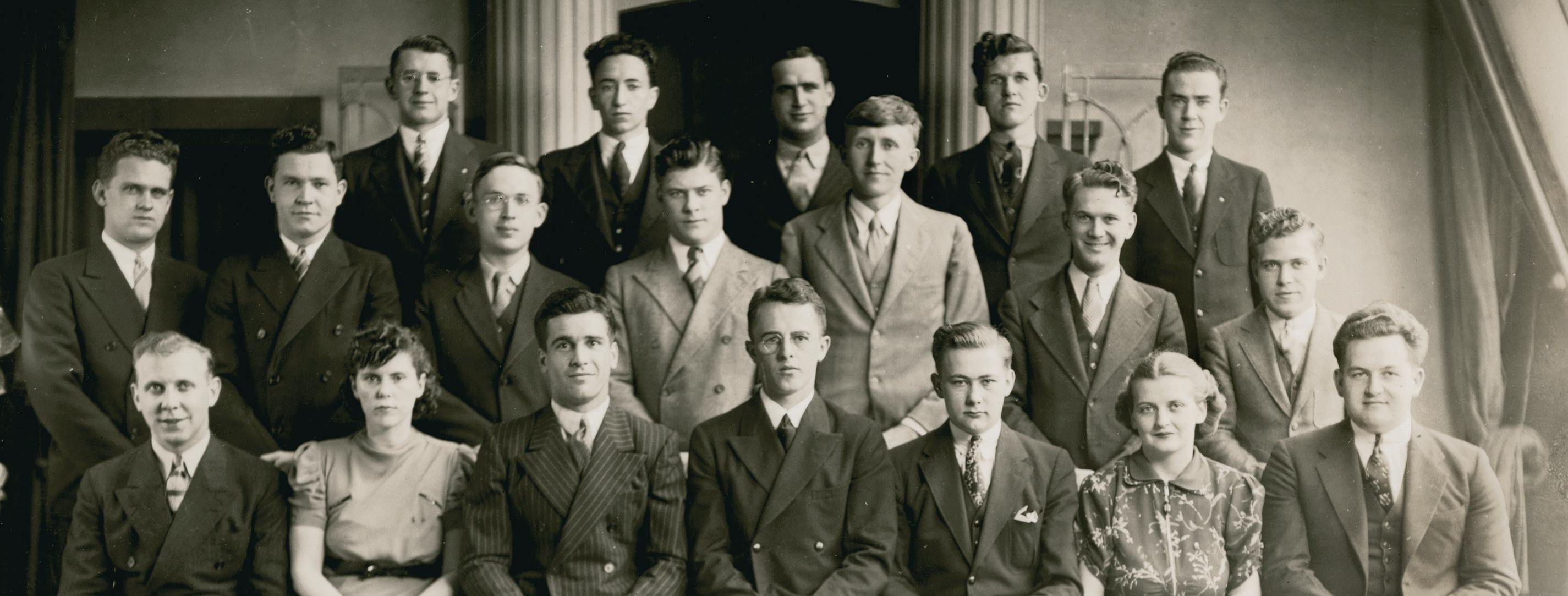
obtainable. With the addition of more subjects the students will now have the opportunity of pursuing a four-year course in engineering leading to a degree without interruption, without the disheartening process of becoming acclimated to new surroundings, and without adding expense to them. And in the end, they will have their degree.
To quiet the small talk in certain circles it will be noted here that there is no appropriation made in the new bill and therefore costs the state no money to change the name and status of the Mining School. Passage of the bill meant only the re-writing of the section in the state statute relating to WMS, and changing it to authorize the Wisconsin Institute of Technology.
As has been mentioned before the name of the school was changed and changed only because “Wisconsin Mining School” is misleading inasmuch as the students attending school are preparing themselves for many types of work other than mining engineering. This is shown by the number of graduates working at companies other than mining. For instance, inquiry of the Personnel Director of the Wisconsin Highway Commission in November 1938 revealed that in the last two years, ninety-four of WMS graduates were employed at work – thirty-nine of these listed as permanent employees. And that number was increased by the graduating class of 1939.
The boys state that having a degree will make it easier for them to get a job not only here but also in other fields.
The four-year course can certainly be made by subtraction from each of the other three years as now is, for school is in session six full days of the week. But three-year course will still be maintained, with presentations of certificate at graduation on completion for those students who would be financially unable to continue and complete the fourth year.
The money that it takes for students finishing school out of the state might as well stay in Wisconsin, for WMS has never asked any other school for credit; it is doing a finished job, taking the raw material as it comes in to the school, giving the boys an excellent training, and sending them out not only able to make a good living but also able to advance in the world with the best from any other school. Consult the WMS Alumni Directory.



The importance of chemistry to the mining engineer is so great that throughout the curriculum at WMS, the chemistry is rigidly stressed. As the course in mining engineering is planned on the assumption that many of the students have had no previous knowledge of the subject, a well-balanced freshman chemistry course paves the way for more advanced courses in qualitative and quantitative analysis.
During the first year of chemistry, stress is laid upon fundamentals in the classroom with five hours a week of class work. To supplement this, there are six hours of laboratory work required. It is here that the student applies that which he has found in the classroom to practical use. In this way the student is brought into direct contact with those things so emphasized in textbook discussion He has a chance to “discover” chemistry for himself, and the value of the subject to him is thus more greatly increased that it would be if a classroom routine were alone pursued.
The chemistry laboratory at WMS is capable of handling one hundred students but as the average freshman class does not exceed seventy-five students there is ample working room. The students are paired into groups and each pair of students work together-but each by himself. They are supplied with all necessary equipment that they may usually need, while a large, well stocked supply room takes care of any unusual contingency which may arise and where the students may obtain special equipment and their needed chemicals.
The students work from a laboratory manual which gives lucid directions for the performance of fundamental and elementary experiments. Supplementary questions which accompany each exercise and which the student must answer, aid the novice in developing a laboratory technique and an analytical mind.
By actually working with the materials and the apparatus in the chemistry laboratory, the novice gains an insight in the workings of our modern chemistry-world, and he is prepared for the supplementary courses such as qualitative and quantitative analysis, mineralogy, petrology, and mining laboratory.

When we return next fall the Wisconsin Institute of Technology will be a four-year institution. For many this will mean they can finish their work on a Bachelor of Science Degree here in Platteville.
The additional funds needed to bring the fourth year into being were added to the Wisconsin State General Budget in the recommendation of Governor Kohler. The General Budget has already passed the house and will, beyond a doubt, pass the Senate soon.
For the fourth year W.I.T. will have to convert more space
into laboratories. It will also mean that there will be from 14 to 16 extra courses added to the curriculum.
The Charter of the W.I.T. allows for the granting of a degree, and upon the addition of new courses which will now be done on a larger school budget, the school will be able to grant a Bachelor of Science in Mining Engineering it will also be possible to earn out of W.I.T., a Bachelor of Science Degree in Civil Engineering. Because W.I.T. will be able to grant a degree in engineering it will be in a position to be considered for an Air Force Reserve Officers Training Unit. The student body in a vote held this winter expressed a strong desire for establishment of a unit here.
We, the students of W.I.T. wish to thank those who, through tireless efforts, made possible this needed enlargement of our school.
As of July 1, 1959, the two Platteville Colleges will be one. An official announcement was made early in November that final plans for the merger of Wisconsin Institute of Technology and Wisconsin State College at Platteville had been approved by the Board of State College Regents.
The name selected for the merged institution of higher learning is Wisconsin State College and Institute of Technology at Platteville. The new college will carry on traditions of both schools, under State College’s name “Pioneers” and Wisconsin Tech’s colors, red and white.
State College President, Bjarne R. Ullsvik will become the president of the combined institution and W.I.T President, Milton A. Melcher will retain the position as head of the Institute of Technology. There will be no loss of employment to present personnel at either school. All faculty members will be retained at present rank, tenure and salary status. Appointment of new faculty will be made by President Ullsvik.
Under the new system, all student feels will be uniform, as will be all records, grading, admissions, class scheduling,
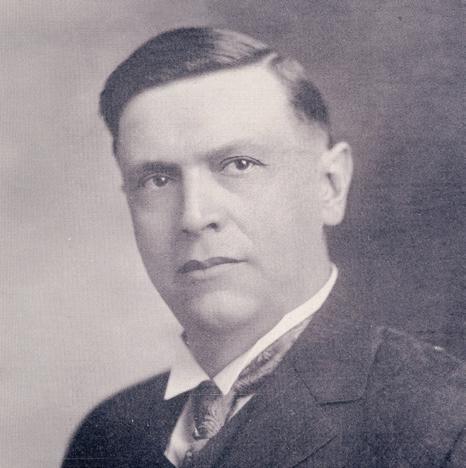
Asa M. Royce Hall, the new hall for male students of WIT and WSCP, was dedicated Sunday, Oct. 26, by WSCP President, Dr. Bjarne Ullsvik and former President Asa M. Royce, for whom the hall is named. The dedication ceremonies were commenced at 2 p.m. and were followed by an Open House.
According to some of the residents of Royce Hall who were former residents of the old dormitory, “There is no possible comparison.” One fellow who lived in the old dorm for two
and the school calendar. There will be one combined annual commencement. A single student governing board will represent all students.
There will be one varsity athletic program, administered by a director of athletics, who will recommend to the president the head coaches and directors of intramural activities.
All school social activities will be open to all students. Rooms in the new residence halls will be for the use of students of both present schools, as they are now, but will be allocated on a first come, first served basis due to their limited number.
The Geode will continue to be published on the same basis as it is now. It will be distributed to Institute of Technology students and other selected persons and subscribers of the Dean of Technology. The Exponent, the State College student newspaper, will continue to be printed bi-weekly.
The Tech library will continue to maintain its basic reference books for technological courses on reserve, but all library books will be catalogued in the State College Library.
and one-half years liked the location of the old dormitory much better, while others prefer the site of Royce Hall.
Royce Hall also has many conveniences unheard of in the old building. Some of these conveniences include washrooms on each floor; beds which roll back into the wall to form daybeds when not in use; ample closet and drawer space; basement equipped with automatic washers, driers and recreational facilities; and many others.
Forty-three of the residents of Royce Hall are students of WIT. Of these 43, Paul Christianson was elected to serve on the five-man Dormitory Advisory Council, Chas. Vittorio was elected to the six man Social Committee, and Roy Smits was appointed Student Counselor for the third floor.
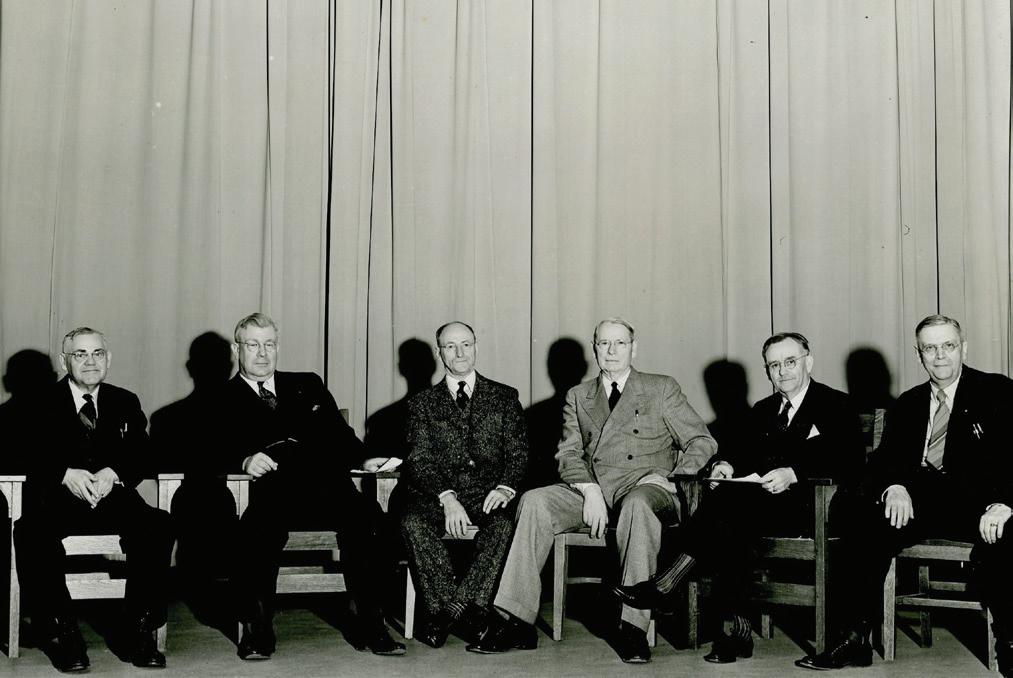
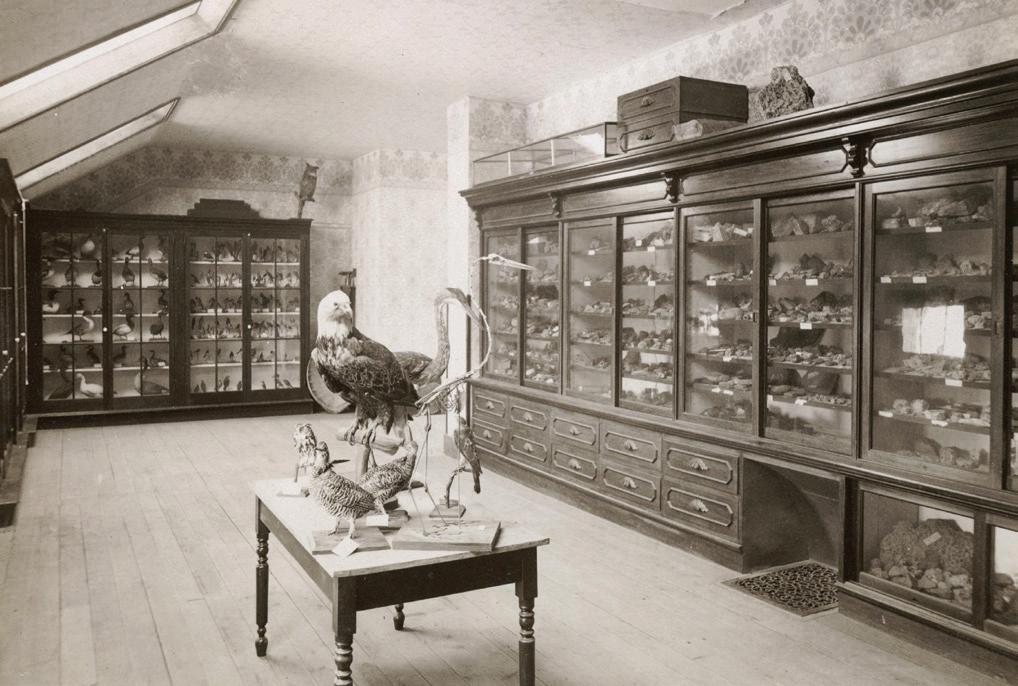
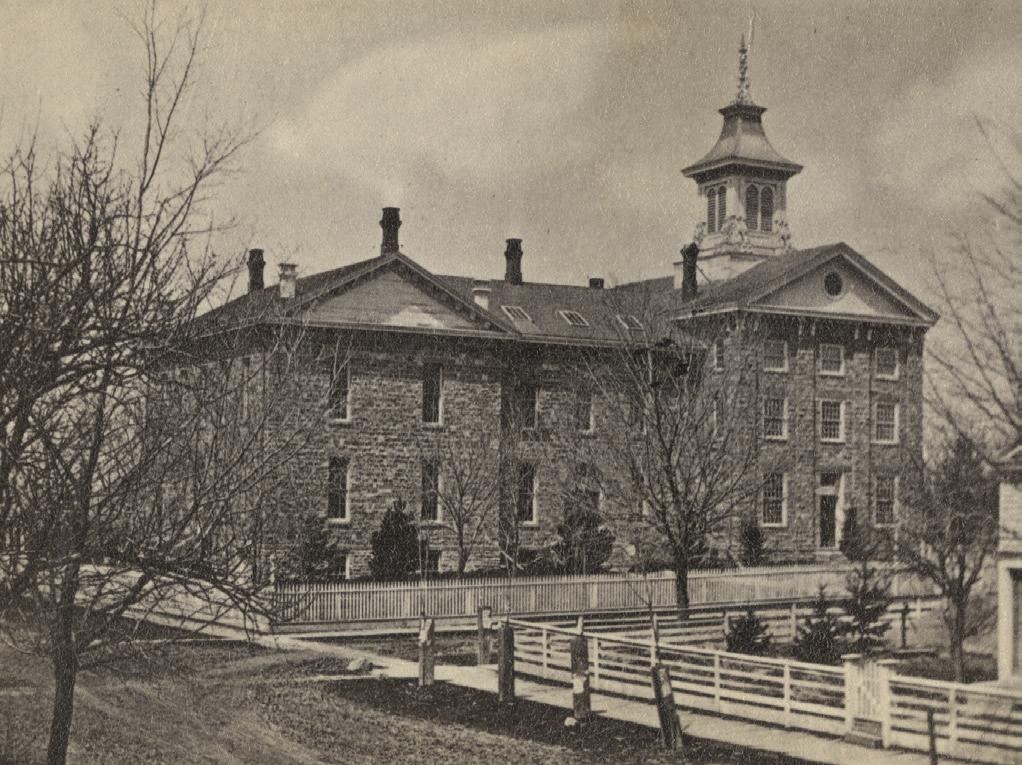
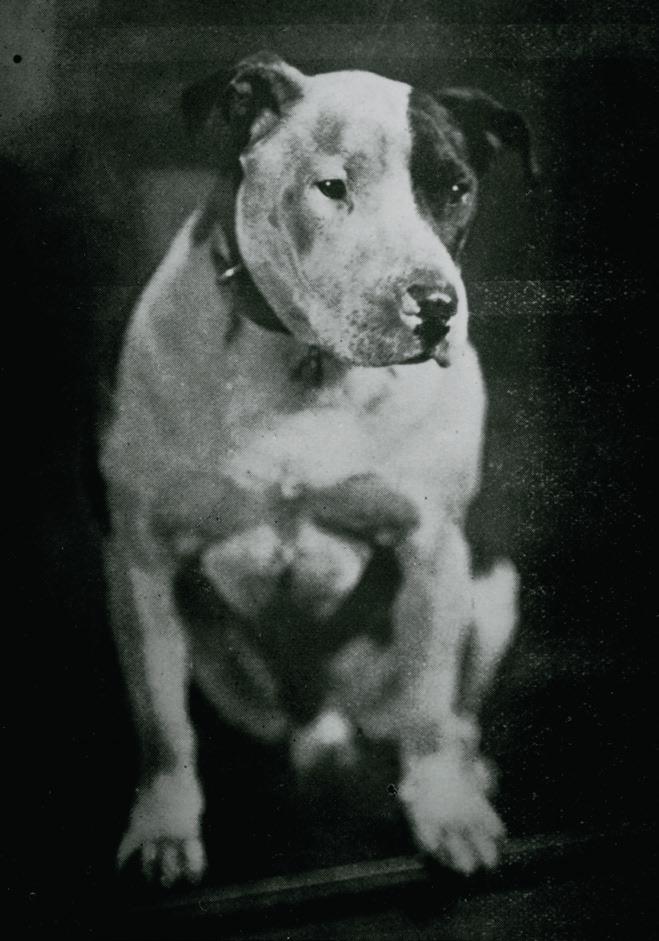


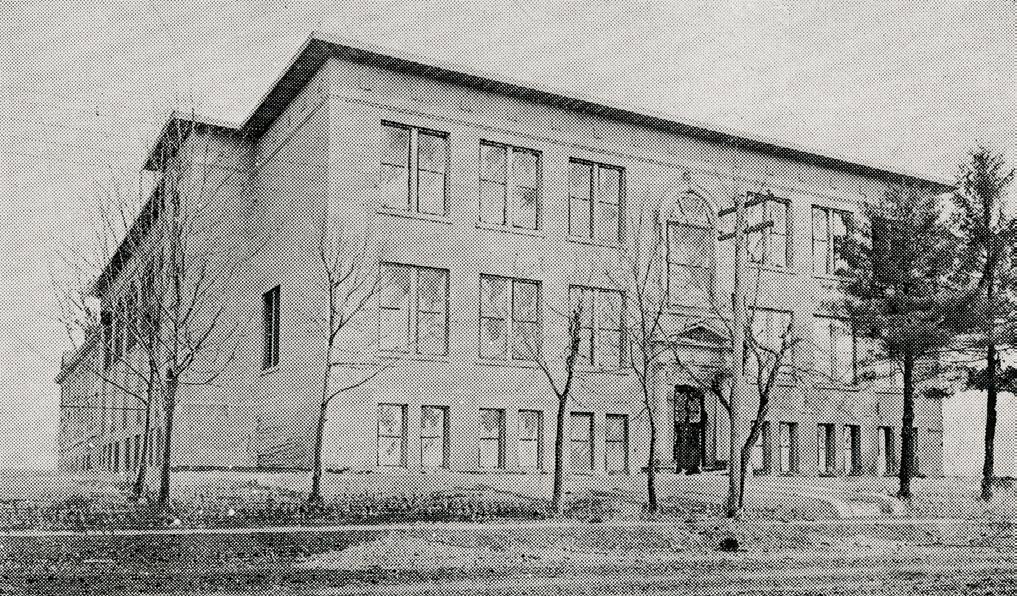
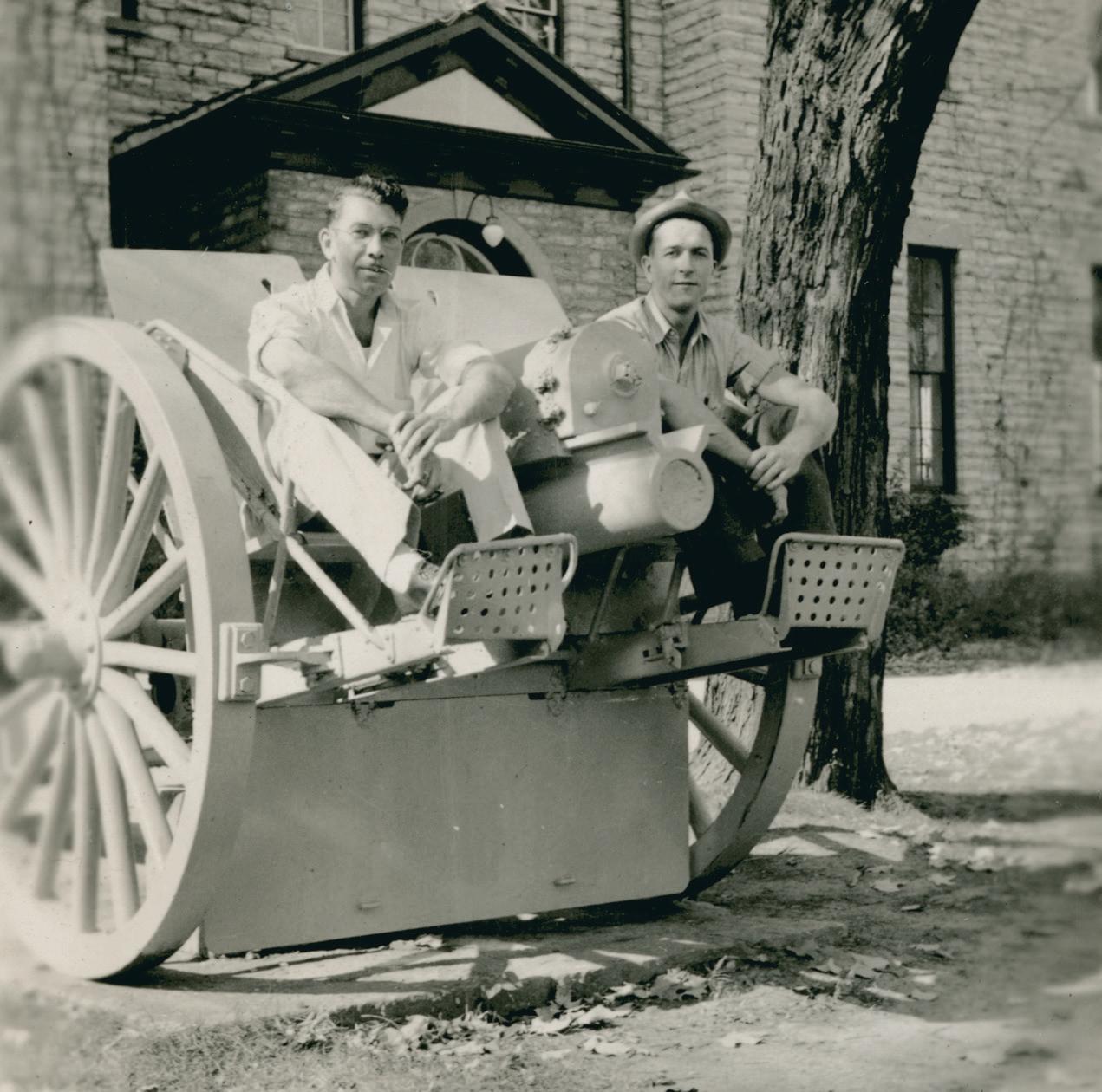
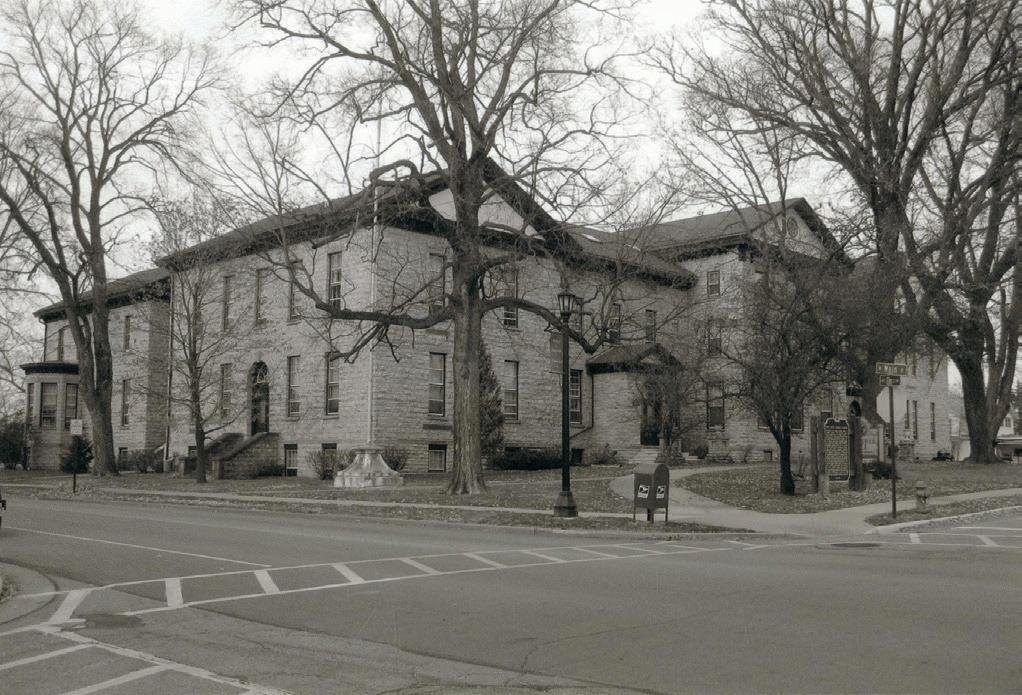


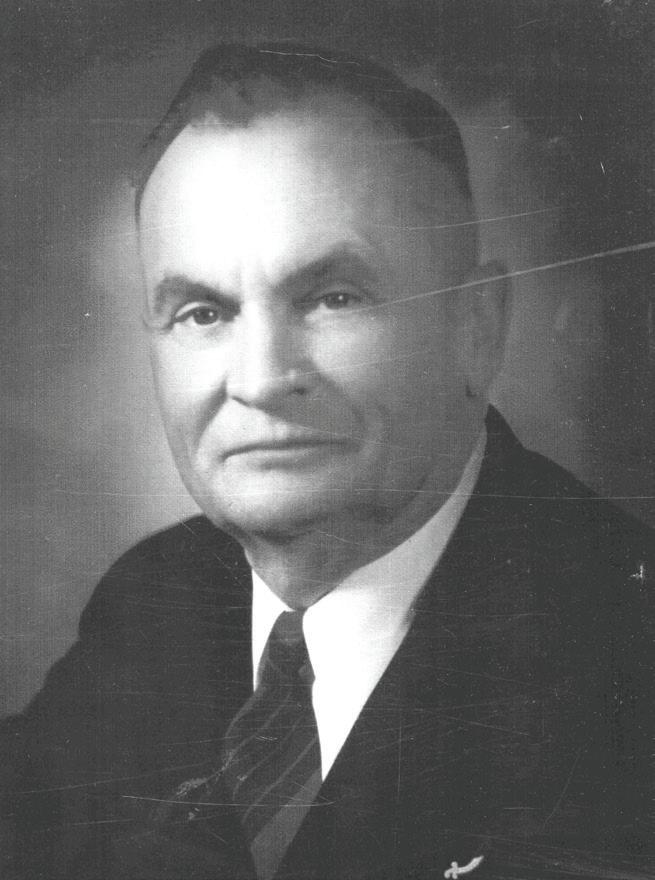
The student on entering WMS evinces deep interest in the school’s emblem. He spends many hours painstakingly copying it from old bulletins, old dance programs, and copies of the Geode. He embellishes his clothes, his room, and his book with its outlines. But he is ignorant of its origin. A bit of research brought the following facts to light:
One evening in 1911 Arthur Butterworth ’12, Walter Buss ’11, and Eugene Dewitt ’11, sat discussing the creation of a suitable design which could be used as the “sign” of the school. One of the men had happened to come across an advertisement of the Willmer-Morgan-Seymour Company which had just placed a new gas producer of the market. The company had used in its advertisement the monogram “WMS”, derived from the first initials of the company men. The men appropriated the monogram and traced it in an oval outline so that it could be read when turned upside down as well as right side up.
They contacted Frank Sangster who was teaching at the Platteville High School and who was experimenting with soft metal and plaster paris moulds. Several castings were made of the monogram cast in plaque-form, but these were too large and crude. Therefore, its form was modified and several castings of the later form made by a Chicago company.
With further experimentation and modification the men got the emblem in a circular form with the name “Wisconsin School of Mines” engraved in the outer rim and with a pick and a shovel crossed in the center to represent the tools of the mining trade. However, the emblem did not appear balanced with just the pick and shovel so a maul, also a tool of mining, was later added to form the emblem as it is today. The only thing that remained to be done was to change the name in the border-the official name of the school was determined to be the “Wisconsin Mining School”; therefore, with a change of name the emblem has been handed down from class to class in its present form.
Because of the excellent work accomplished by its creators the emblem has been chosen as the permanent seal of the school. With that idea in mind a huge replica of it has been laid in front of the chemistry laboratory at the north entrance of the school. It was constructed of brass and red cement under WPA supervision. The maul, pick and shovel were cast in one piece out of bronze. Casting of this piece was undertaken by William (Rudy) Rudwell ’34 of Kenosha, Wisconsin. Pins, watch fobs, cigaret cases, and similar mementos stamped with the seal are in great demand by the students and the office finds it difficult to keep a varied supply on hands at all times.
Word has been received here that the National Executive Committee of the A.I.M.E. approved the by-laws and application for admission submitted by the Wisconsin Institute of Technology student chapter. This approval has been pending for some time while waiting for the national committee to convene.
During the pending months the chapter has been anything but inactive. Mr. Sullivan, mill superintendent for Calumet & Hecla Mines at Shullsburg, was asked to be counselor, and accepted.
Monthly meetings are held at eight p.m. on the second Thursday of each month.
The first meeting with a program was held on January 10. The speaker for the event was Mr. Percy Gardner, inventor of the hydraulic hoist. He explained the development and working possibilities of the hoist. Mr. Gardner is in charge of the installation of the first working unit at Shullsburg.
The second meeting was held on February 14 and a program with Mr. Reynolds, comptroller 1 for the Calumet and Hecla Mine, was cancelled, when Mr. Reynolds was called out of town. Mr. Art Puttonen gave a very interesting talk on his experiences as mine superintendent of a Manganese mine in Brazil. His talk was accompanied by slides. Mr. Puttonen is now manager of the Little Grant mine. After Mr. Puttonen’s talk a movie “Mechanized Hard Rock Mining” was shown.
A good turn out of A.I.M.E. members from mining companies in the district was present at both meetings. After the programs refreshments were served.
This members of the Student Chapter who wish to join the National association as Student associate members may get the forms and information from the officers of the school chapters.
In the wee hours of the chilly morn
Before the sun’s first rays are born
The alarm goes off with an awful clatter
His dreams so sweet it strives to shatter.
He leaps in haste, jerks on some clothes
Grabs his boots, and bag of woes
Down to the grease joint for coffee and roll
He gulps cause it’s time for the bell to toll.
While the people of Platteville are still in their beds
He’s attending a seven-thirty class which he dreads
There are slide rules, losses, forces and gravity
Minerals, discourses, ponies and equity.
When the sun finally rises, first hour is past
He wishes sincerely that it were the last
Next hour he climbs upstairs for a test
He knows he won’t pass it—but he’ll do his best.
And so it goes, the days weary grind
And when the sun finally sets we find
Our MINER a typical day has spent.
(With apologies to Longfellow, Kypling, Shakespeare, anyone who reads this.)
A woman’s Auxiliary to A.I.M.E. (Upper Mississippi Valley Section) is being organized by wives of A.I.M.E. members. The first meeting was held Friday, November 21, at the home of Mrs. Robert Haffner in Dubuque. Sixteen members were present from Galena, Platteville, Benton, Dubuque, Cuba City, and Darlington. [....]
Aims of the organization are three-fold. The Education Fund Committee has funds available from the national headquarters to provide educational loans to eligible students of WIT. The Library Committee collects books of all categories to aid in the establishment of libraries in the area. The national organization will also provide to areas stricken by disaster through its Chest Committee.
Wives of members of the student chapter of A.I.M.E. are also eligible for membership. They will be associate members and will pay $1.25 local dues only. They will be contacted by the membership chairman, Mrs. Marius Gronbeck, in the near future.
The student body will install a Greek letter fraternity the TKB.
This is an honor fraternity to all those that participate in the finer things of life. Meaning of the letters TKB, is an international engineering fraternity of all Engineering schools. It stands for better relations between fellow men of the engineering field. The school has had this fraternity for some time now only it has never appeared in the eyes of the students.
The letters TKB are short for the real meaning. In English we translate it as the Tapa Kega Beeta fraternity. The membership is open to all the students. Meetings are held every Friday night after the serial and show, at one of the local places of business up on the street.
The membership is now given to the entire student body and all new members will have to take the traditional pledge and initiation on the annual “M” day. We reserve the right to cancel all the members who don’t care to cooperate in the meeting and business of this society. We hope that this will be in effect until annulled by congress with the Eighteenth Amendment. This society will better the relations among the students.
1 Bring the professor newspaper clippings dealing with his subject. Demonstrates fiery interest and gives him timely items to mention to the class. If you can’t find clippings dealing with his subject, bring in any clippings at random. He thinks everything deals with his subject.
2 Look alert. Take notes eagerly. If you look at your watch, don’t stare at it unbelieving and shake it.
3
Nod frequently and murmur, “How true!” To you, this seems exaggerated. To him, it’s quite objective.
4 Sit in front, near him. (Applies only if you intend to stay awake.) If you’re going to all the trouble of making a good impression, you might as well let him know who you are, especially in a large class.
5 Laugh at his jokes. You can tell. If he looks up from his notes and smiles expectantly, he has told a joke.
6 Ask for outside reading. You don’t have to read it. Just ask.
7 If you must sleep, arrange to be called at the end of the hour. It creates an unfavorable impression if the rest of the class has left and you sit there alone, dozing.
8 Be sure the book you read during the lecture looks like a book from the course. If you do math in psychology class and psychology in math class, match the books for size and color.
9
10
Ask any questions you think he can answer. Conversely, avoid announcing that you have found the answer to a question he couldn’t answer, and in your younger brother’s second grade reader at that.
Call attention to his writing. Produces an exquisitely pleasant experience connected with you. If you know he’s written a book or an article, ask in class if he wrote it.
As to whether or not you want to do some work, in addition to all this, well, it’s controversial and up to the individual.
This year as in all previous years since the “M” was built the Miners gathered to de-weed the “M” and apply concrete to the slope to preserve the rock. The Committees were headed by seniors with Dave Bockmeyer as general chairman, and credit for the efficient organization must go to them.
As some four cu. Yards of cement were poured on the hill via five-gallon buckets and a bucket brigade, the mixture flowed efficiently up-hill, the laws of gravity notwithstanding.
As is customary the freshman class was well initiated into the tradition of the “M” cleanup and when day was done were waiting with fiendish looks in their eyes for the next class of neophytes.
The “M” was surprisingly well preserved from the winter and summer and the weed crop was very poor. It is anticipated
that the “M” be painted next spring so that it will shine forth during the months it is free of snow. At that time it will also be poisoned to retard the growth of weeds.
As a sideline to the “M” cleanup the football team rolled sleeves up and operated on the athletic field. They de-rocked it and burned over the north bank. The defensive and offensive teams lined up against each other and made believe that the other half was the rest of the conference. It was a good rough scrimmage that lasted somewhat longer than the regulation game would.
Of course to complete the day the annual party was held. Food and liquid refreshments were served. The evening proved to be a smashing success as Freshman mingled with upperclassmen in a mutual feeling of merriment and good fun.

At long last, after several years of pushing and pulling by many people along with A.I.M.E., a sign has been erected at the site of the “M”.
The idea for a possible design was broached to the A.I.M.E. some years ago and a contest was held to institute a design for the proposed marker. One design was chosen but this proved to be a difficult sign to build and erect so the idea was shelved.
In the few years following this, the question of a sign was brought up sporadically at A.I.M.E. meetings but nothing definite was done until this year when the organization, working in conjunction with the school, got the sign built and erected.

Several students built the sign financed by the school and a local sign painter lettered it. The Mining methods class, all of whom are A.I.M.E. members, worked two afternoons erecting the sign.
The sign was erected at the junction of the road to the old State Capitol and the road that runs below the “M”. The frame was cemented in on the afternoon of April 26 and the sign itself was fastened to this frame on the following Tuesday afternoon.
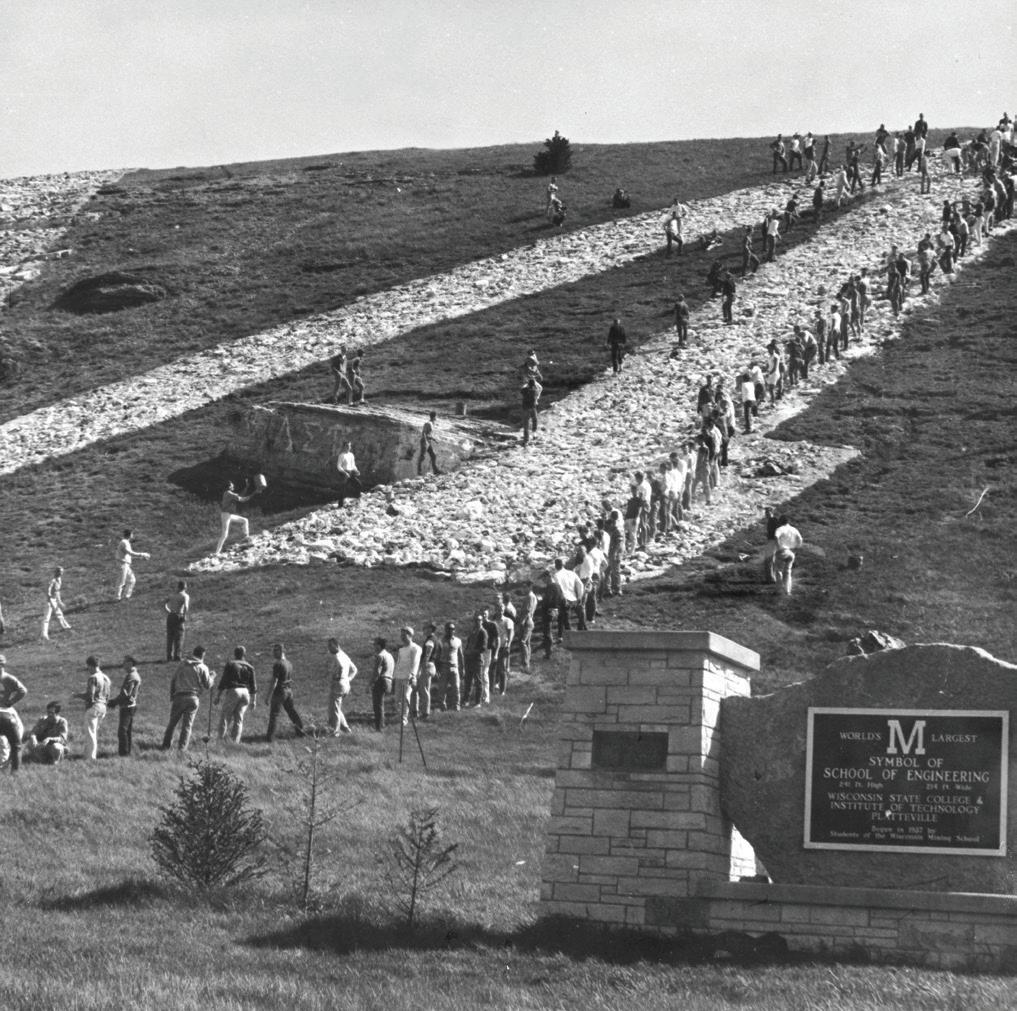
The UW-Platteville College of Engineering, Mathematics and Science gratefully acknowledges the contributions of the following alumni, friends, and corporate sponsors from Jan. 1, 2023 through Dec. 31, 2023.
Kris Ackerman 1992
Tamara Adams 1986
Helen Adams 1981, 1987
Terry Adams 1981
Kurt Adler 1996
Kristine Andersen 2005
Daniel Andersen 2006
Gerald Anderson 1966
Judy Klitzsch-Anderson 1967
Kenneth Anderson 1971
Norman Arendt 1970
Heidi Arnold 2012
Patrick Arnold 2011
Michael Aumann 1992
William Ayen 1967
Darcy Ayen 1967
Richard Baker 1979
Peter Balousek 1974
Robert Barbuch 1969
Jeffrey Barta 1990
Marian Barth 1979
John Barth 1978, 1988
Joseph Bauer 2007
Sharonne Baylor 1991
Donald Beaty 1959
Jeanne Beckley 2005
Travis Beek 2002
Janet Behrens 1973
Bruce Belscamper 1960
Joseph Benbenek 1985
Janice Bennett 1980
Charlene Bennett 1975
Joan Bennett 1970
Todd Bergstrom 1986
Rayelle Berola 2003
Floyd Bethke 1970
Logan Betthauser 2023
Edward Biddick 1958
Gregory Bies 1996, 2016
Justin Bilskemper 2006
David Bird 1963
Robert Bocher 1958
Gene Bohn 1983
Robert Boldt 1970
Barbara Boldt 1976
John Boldt 1976
Kevin Bonde 1978
Thomas Bonde 2002
Ryan Bonell 2006
Scott Borroughs 1997
Rose Borroughs 1998
Nora Bowgren 1970
James Bowgren 1971
Bruce Bowles 1978
Dr. Gregory Boys 1994
Priya Devaguptapu 1993
William Bremer 1970
Dennis Breunig 1969
Richard Briggs 1967
Charles Broers 1979
Dave Broihahn 1987
Jennifer Brooks 2000
William Browns 1969
Clyde Bryant 1962
Aaron Bubb 1999
Howard Buchanan 1961
Wayne Budrus 1976
John Bullock 1997
Joseph Bunker 1996
Lance Burger 1984
Gerald Burns 1959
David Burroughs 1981
Dean Busch 1981
Kristen Cadman 2001
Anna Carroll 1974
Stephen Cecil 2016
Randall Christen 1977
Lisa Claussen 1987
Dr. Joseph Clifton 1976
Merryn Cole 2003
Evan Constant 2015
Haili Cota 2022
Robert Crisp 1986
Steven Crouch 1976
Emily Crowe 2013
Deborah Custer 1999
Keith Custer 2001
Harold Daus 1974
Barb Daus 1971, 1988
Carrie Davin 1991
Ronald Davis 1962
Anthony Davis 1996
Wendy Denk 1972
Emily Dhingra 2001
Frances Dieter 1958
Donald Dieter 1957
Stephen Dikkers 1975, 1984
William Dixon 1971
Diana Dixon 1969
Dale Dixon 1969
Thomas Dobson 1967
Ruth Dobson 1965
Frederick Domann 1983
James Doperalski 1982
Brian Dorn 1979
Gerald Dorscheid 1959
Heather Dotzauer 2005
David Dotzauer 2005
Adam Draeger 2002
Erin Draeger 2001
Elizabeth Dreher 1983
Fred Dreher 1986
Marilynn Dressler 1986
Christopher Duescher 2009
Carol Dunlap 1968
Michael Dunn 1970
Rick Eagen 1990
Brandon Ebent 1997
Anne Ebent 1998
Keith Eckerman 1962
Donald Erickson 1980
Stanley Ewing 1962
Hannah Exner 2020
Greg Faherty 1988
Edward Falk 1969
Timothy Falkofske 1976
Alan Farrell 2000
Ryan Fecht 1996
Ryan Feldmann 2009
Jessica Fick 2003
John Fick 2003
Mike Fisher 1983
William Flemming 1967
Dr. Sidney Fletcher 1990
Katherine Flug 1962
Jim Fowler 1979
Marcus Frana 2007
Mary Frank 1973
George Furey 1979
Jeffrey Gafner 1990, 2013
Martin Galantha 1967
Katherine Gauthier 2017
Landon Gauthier 2017
Joseph Geisler 1972, 1973
Lee Gibbs 2002
Rebecca Gibbs 2002
Mark Gibson 1981
Gordon Gimski 1968
Curtis Gobeli 1970
Beth Goldberg 1981
Gary Goldberg 1981
Thomas Golden 1972
Patrick Golden 1964
Patrick Gowens 1991
Tracy Gowens 1990
Thomas Graber 1968
Kenneth Graham 1978
Gary Gray 1964
Gary Grimm 1964
Robert Gundlach 1972
Randy Hall 1972
Sue Halvensleben 1995
Todd Halvensleben 1995
Brad Halvensleben 1996
Cindy Halvensleben 1997
Edward Hancock 1976
James Hansen 1994
Larry Hanson 1971
Marjory Harker 1969, 1977
James Harker 1967
James Harper 1981
Emily Harrison 2016
Morgan Hartman 2018
Tim Hearden 1994
Christian Heer 1982
Tim Henson 2013
David Hess 1987
Melissa Himmelmann 1996
Richard Himmelmann 1997
Larry Hinders 1965
Fred Hintz 1989
Michelle Hintz 1990
Mark Hoague 1980
Jason Hoeppner 1992
Steven Hoffman 1971
Michael Hoffmann 1985
Leland Holm 1963
Albert Hooker 1980
Jean Hopkins 1967
John Hopkins 1966, 1973
Terry Horst 1972
Matthew Hoslet 2017
Dalton Howell 2018
William Huff 1959
Edward Hui 1978
Beth Hulen-McCumber 1992, 2008
David Hunt 1978
Brandon Ingersoll 2010
Terrence Ingram 1961
Colleen Ingwell 1995
Danielle Izdepski 1996
Steven Jacobs 1998
Rev. William Jacobs, Jr. 1964
Michael Jacques 1973
Harlow James 1963
Dennis Janda 1980
Lisa Jelen 2001
Catherine Jellings 1989
Timothy Jenkins 1980
Steven Jirschele 1978
Julie Johll 2002
Jay Johll 2003, 2021
Dick Johnsen 1968
Todd Johnson 1981
Brenda Johnson 1988
Timothy Johnson 1989
Dr. Clarence Johnson 1977
Seth Johnson 2010
Jane Johnson 1983
Douglas Johnson 1977
Dana Johnson 1985
Judy Johnson 1979
Mark Johnson 1979
Kurtis Johnson 2017
Terry Johnson 1975
John Jones 1985
Carley Jones 2016
Matthew Jones 2016
Douglas Jorgensen 1967
Catherine Kaake 1978
John Kaske 1952
Gary Kassen 1983
Greg Kasza 1972
Henry Keen 1985
Susan Kellicut 1970, 1973
Lawrence Kent 1973
Barbara Kies 1968
John Kincaid 1980
Dick King 2015
Paul Kinsman 1979
Robert Kluge 1969
Nicole Knier 2006
Jordon Knier 2006
Harriet Knops 1969
Gary Knops 1968
Todd Knox 2003
Jerold Kobiske 1974
Henry Koch 1960
Dr. Jane McLamarrah 1971
Mary Kohls 1967
John Kortas 1972
Dale Kowalski 1972
Becky Kowalski 1997
Daniel Koziczkowski 1996
Travis Kraemer 2017
Gregory Krahn 1969
Ella Kramer 2019
Donald Kratcha 1960
Jeffrey Kronser 1977
Laurie Krutza 1973
Michael Krutza 1971, 1972
John Kuhl 1963
Perry Kuznar 1982
Eugene Laschinger 1975
Carol Leannah 1980
Judith Lee 1966
George Lee 1973
Jennifer Leech 2009
Richard LeMahieu 1976
Betty Leonhard 2000
Gregory Levande 1987
Kent Locy 1993
Greg Loek 1980
Patrick Lofy 1992
Michael Logsdon 1989
Jack Losch 1972
Gary Loss 1971
Patricia Lyford 1966
William Lyford 1966
Sean Lynch 1999
Patricia Lynch 1965
Les Mammen 1995
Dennis Maney 1988
Charles Maney 1962
Jeff Mantes 1976
Cynthia Marcelais 1971
Daniel Marotz 1999
Mallory Martin 2012
Ross Martin 2013
Pamela Marvel 1969
Tricia Mason 2009
Todd Matheson 1992
Jonathan Maxwell 1990
Bobbi Maxwell 2002
Jeffery May 1984
Jeff Mazanec 1978
Timothy Maziasz 1980
Barbara McCauley 1968
Julia McDonald 1980, 1981
Austin Mcdonald 2018
David McIntosh 1974
Ryan McKillips 2006
Katelyn McLaughlin 2011
Kevin McMullen 1986
Daniel McNaughton 1969
Jane McNett 1970
Ronald Meissen 1971
Johanna Meister 2020
Adam Mentink 2009
Wayne Metzger 1989
Dale Meyer 1979
Dr. Mark Meyers 1981
Paul Mezydlo 1988
James Michalek 1974
Bret Mihlbauer 1987
Kenneth Mika 2008, 2015
Angela Moe 1999, 2006
Jason Moe 1996
Michael Molitor 1974
Laura Molitor 1975, 1989
Norma Moody 1974
David Moody 1974
Dale Moody 1966
Sidney Mueller 1981, 1983
Travis Mueller 2015
Cecilia Mullikin 1974
Lloyd Mullikin 1973
David Murphy 1970
James Myers 1964
Lavern Nall 1972
Taryn Nall 1975
Kathleen Nall 1973
Larry Nelson 1966
Jeff Nelson 1979
Donald Nelson 1970
Cole Nelson 2020
Philip Nickson 1967
Ronald Niendorf 1968
Jack Noble 1967
Robert Novak 1986
Mark Novak 1979
Bruce Novinska 1981
Caitlin O'Connell 2013
Daniel Olson 1988
Dennis Olson 1970
Brad Opsahl 1990
Brendan O'Rourke 1990
Elizabeth Osterholz 2015
Matthew Osterholz 2010
Dean Oswald 1990
Patricia Owen 1963
Cary Palmer 1968
Bradley Pankow 1986, 2012
Daniel Parizek 1980
Aaron Patterson 1996
Laura Patterson 1995
Donald Pauser 1961
Kathleen Pechan 1980
Michael Pechan 1971
Lori Pernsteiner 1988
L. Lyle Perrin 1959
Kenneth Pesch 1971
Mark Peters 1992
Terrence Peterson 1976
Ellen Phillips 1979
Collin Pleuss 2019
John Pluemer 1986, 1990
Julie Pluemer 1991, 1997
Richard Prieve 1969
Michael Rabas 1978
James Rabe 1996
Robin Radocay 1974
Joseph Radocay 1974
Erin Ralph 2003
Jesse Stanton 2009
John Rathke 1988
Sally Reed 1972
Ed Reichmann 1960
Robert Reisinger 1978
Eugene Resch 1985
Vynnette Rettenmaier 1965
David Rice 1981
Theodore Richards 1961
Matthew Richards 1991
Raymond Richardson 1971
Jeff Richter 1984
Eleanor Richter 1983
Reese Riddiough 1962
Alan Riebe 1987
Sam Riechers 1974
Rod Rinzel 1998
Michael Ripp 1984
William Ripp 1973
Stephen Roake 1970
Phillip Roberts 1985
Jill Roethe 1973
Charles Rollman 1967
Edward Roth 1968
Eric Rufener 2018
Dennis Runde 1986
Andy Rusk 1972
Michael Ryan 1971
Tammy Salmon-Stephens 1994, 2005
Douglas Stephens 2001, 2004
Dr. William Sanders
Jean Sanders 1970
Jeff Sanders 1995
Carol Sands 1961, 1970
Kimberly Sargent 2013
Christopher Schaub 2008
Jack Scheidegger 1960
Steve Schmidtknecht 1980
Roy Schneider 1977
Don Schneider 1967
John Schrank 1975
John Schroeder 1977
Dennis Schultz 1971
Judy Schuppner 1967
Gaile Schwickrath 2012
Dale Secher 1961
Jean Seely 2021
Scott Seely 1995
Duncan Seffern 2000
Jeffrey Seitz 1978
James Shank 1992
Geri Klein-Shank 1992
David Shanks 1977
William Shinker 1969
Robert Shower 1970
Mark Shubak 1993
Daniel Smith 2012
Danielle Smith 2012
Margaret Sommer 1969
Joseph Spellman 1980
Ryan Staab 2007
Rachael Staab 2006
Stacia Stephenson 2010
Timothy Stephenson 2009
Melissa Sternhagen 2000
Thomas Stetzer 2005
Wayne Stordahl 1961
Barbara Strohm 1976, 1986
Lisa Stroshane 1991
Steve Stroshane 1992
Jeremy Struss 2005
Carrie Struss 2003, 2014
Brent Studnicka 1989
Roxanne Sundin 1974, 1991
Kelsey Tempas 2016
William Tenwinkel 1990
Patrick Terbilcox 1982
Ron Tessmann 1980
James Theusch 1972
Cameron Thompson 1973
Michael Thompson 1979
Jane Tonelli 1967
Russell Tonelli 1968
Nathan Torgerson 1992
Linda Trumm 1977
Brian Udovich 1997
John Unterholzner 1999
Steven Van Lankvelt 1986
Benjamin Van Straten 2013
Richard Vedvik 2005
John Verzal 1974
Kevin Vesperman 1976
John Volker 1970
Robert Vosberg 1978
Mary Pat Vosberg 1976
Ralph Vosters 1975
Eric Vosters 2016
Paul Vraney 1985
Mary Wagner 1979
Daniel Wagner 1974
Chelsie Wajda 2012
Jay Waldschmidt 1983
David Walker 1979
Roger Walton 1981
Philip Waterworth 1965
Brian Weber 1988
Carol Weber 1989
Richard Weber 1979
Steve Wehrley 1983
Ronald Weier 1974
Janis Weier 1973, 1984
Jeffrey Welch 1976
Cindy Wienkers 1978
Kevin Wienkers 1977
James Wieters 1973
Curtis Wilkins 1957
Judith Wilson 1979
Sanda Win 2022
Jackie Winchester 1982
James Winters 1996
Eric Wittwer 2008
Matthew Wolfe 2007
Patricia Wunderlin 1976
James Wunderlin 1968
Tian Zuo 2022
Paul Young 1967
Brian Young 1986
Theodore Zabel 1968
Mark Zapp 1984
Michael Zeigle 1974, 1988
Daniel Zielinski 2007
Aaron Zimmerman 1989
Todd Zuberbier 1986
Cindy Zuberbier 1989
Steven Zuberbier 1988
Alexander Zwart 2011
Andrew Zwieg 2006
James Almquist
Dr. Max Anderson
Linda Wright
Rocky Andes
Mohammad Ashrafuzzaman
Holly Attenborough
Robert Bank
Barb Barnet
Cheryl Bauer
Louis Behrens
Susan Bennett
Eric Bjornsen
Joanne Bohn
Gretchen Bohnhoff
Richard Boorse
Mary Jo Booth
Joshua Boots
Mary Boots
Ginny Bowar
Joan Breunig
Jake Brunoehler
Dolores Burroughs
Olivia Cerra-Krawiec
Sue Cherryholmes
Ellen Christians
Alice Clifton
Brenda Colin
Benjamin Collins
James Collins
Susan Cramer
Robert Cramer
Michele Crisp
Bethany Crowell
Christina Curras
Emily Czech
Ranada Davis
David Den Herder
Dr. Mittie Den Herder
Nancy Devine
Benjamin Dorn
Margaret Dorscheid
David Douglas
Ann Drapcho
Jessica Drapcho
Joe Drapcho
Shirley Drapcho
Collette Engerson
Harold Evensen
Janita Ewing
Christina Exner
Jill Field
Ann Flattum
Lavona Fry
Meridona Giese
Susan Gimski
Michelle Godez
Sara Graham
Heather Green
Pamela Greenhalgh
Kevin Haertzen
Barbara Hammond
Wanda Harper
Marcia Harr Bailey
E.G. Harrell Estate
Marjorie Hennings
Angie Herting
Ruth James
Sharon Johnson
Shirley Johnson
Catherine Jones
Stan Kabat
Terri Kabat
Carolyn Keller
Elizabeth Kincaid
Jacob Kincaid
James Kincaid
Christine Kincaid
Alf Kirkeeng
Arthur Klingerman
Mac Klingler
Jeff Knudson
Kathleen Koch
Michael Kohl
James Kopel
Janey Kortas
Jacquelyn Kuhl
Judy Kundert
Lisa Landgraf
Jackson Lind
Susan Lindholm
Kathleen Rice
Raymond Lynch
Danielle Maclaurin
Ann Kuai Man
Edgar Man
Catherine McAvoy
Scott McDermott
Peter McGahey
James McGovern
Eileen Meissen
Lynn Meyers
Harlan Miller
Trapper Mitchell
Jim Moris
Deanna Moris
Pamela Mueller
Alyson Mullin
Carol Nelson
Cory Noble
Joann Novak
Diane Novinska
Rebekah Parker
Dr. Philip Parker
Robert Patterson
Pamela Peters
Nancy Preston
Del Preston
Fern Reinstein
Victoria Reuter
Sandra Richards
Dr. Allan Richert
Lillian Richert
Evelyn Ritger
Katie Rooney
Kurt Salm
Philip Sands
Elizabeth Schaal
Meghan Scheff
Laura Schneider
Dan Schrum
Thomas Schuetz
Rebecca Schuetz
John Seeck
Eva Sfikas
Rachel Siciliano
David Staub
Kurt Strand
Nick Sudheimer
Dr. Charles Sundin
James Swenson
Debbie TenHaken
Robert Thomas
Jason Thrun
Nao Tsumagari
Cathy Tufte
Sheila Van Lankvelt
Kathleen Volz
Denise Vosters
Valerie Wachuta
Heidi Walker
Larry Walters
Janice Walters
Steven Wauer
Wayne Weber
Dr. Richard Wetzel
Lois Wilkins
D. Joanne Wilson
Christine Wunderlin
Danny Xiao
Dr. Philip Young
A Y McDonald Manufacturing
Alliant Energy Corp.
Alliant Energy Foundation
American Engineering Testing
American Society of Civil Engineers
American Transmission Company LLC
Andersen Corporation
Applied Pavement Technology Inc.
ASCE WI Southwest Branch
Ascendium Education Group
Baxter & Woodman
BCI Burke Company LLC
Belcan Engineering Group LLC
Big Lift LLC
BlueScope Foundation North America
Boeing Company
Brunswick Corporation
BW Papersystems
BWBR
Caterpillar Inc. Public Affairs
Support Services
Caterpillar Inc.
CGC Inc.
Chapter CT, P.E.O.
CORRE Inc.
County Materials Corporation
Curb It
Dairyland Power Cooperative
Debeck Foundation
Delta 3 Engineering Inc.
Didion Milling Inc.
D'Onofrio Kottke & Associates
Eaton Corporation
ECK Industries Inc.
Edgerton Contractors
Epic
Farmhouse Fraternity Alumni Association
Fehr-Graham & Associates LLC
Findorff
Forest Lake Improvement Association
Foth & Van Dyke LLC
Foth Infrastructure & Environment
Gauthier & Sons Construction
Georgia-Pacific GRAEF
Greenheck Group
Hewlett-Packard Company
HNTB Corporation
IMEG Corp.
Jewell Associates Engineers Inc.
John Deere Construction & Forestry Company
John Deere Foundation
JP Cullen
JSD Professional Services Inc.
JT Engineering Inc.
Kapur & Associates Inc.
Kern Family Foundation
Kimberly-Clark Corporation
KL Engineering Inc.
Koch Companies Community Fund
Kraemer North America
L.E. Phillips Family Foundation Inc.
Larson Engineering Inc.
Loudspeaker Component LLC
Lynch and Associates - Engineering Consultants LLC
Makepeace Engineering LLC
Mathy Construction Company
Mead & Hunt Inc.
Mi-T-M
MSA Professional Services Inc.
ND Paper
New Manufacturing Alliance
Nielsen Madsen & Barber
Origin Design
Oshkosh Corporation
Paragon Potato Farms Inc.
Payne and Dolan Inc.
Phillips-Medisize
Photonic Cleaning Technologies LLC
Pilots N Paws
Plexus Corporation
PowerWorld Corporation
Presto Foundation
Pustina Constuction Inc.
R H Batterman & Company
RCI Engineering LLC
Realtime Utility Engineers Inc.
REI Engineering Inc.
RFA Engineering
Rite-Hite Corporation
Robotics Education & Competition Foundation
Rockwell Automation Charitable Corp
Matching Gift Program
Runde Engineering Inc.
Russell Construction
Scot Industries
Seagrave Fire Apparatus LLC
Sheltered Wings Inc.
Shive-Hattery Engineers Inc.
Shivvers Manufacturing
Spann & Associates LLC
Stenstrom Excavation & Blacktop Group
Strand Associates Inc.
The Greater Cincinnati Foundation
The Labcorp Charitable Foundation
The Metrix Company
Ticket Sports Bar and Grill
Tormach Inc.
Trane Technology Co.
TRC Environmental Corporation
U.S. Department of Energy
Ulteig
Unison Solutions
Van Meter Inc.
Vista Outdoor
W. W. Grainger Inc.
W.R. & Floy A. Sauey
Family Foundation
Wahlert Foundation
WDS Construction
We Energies Foundation
WI Depart Transportation
Wieser Concrete Products Inc.
Wisconsin Asphalt Pavement
Association
Wisconsin Concrete Pavement Association
